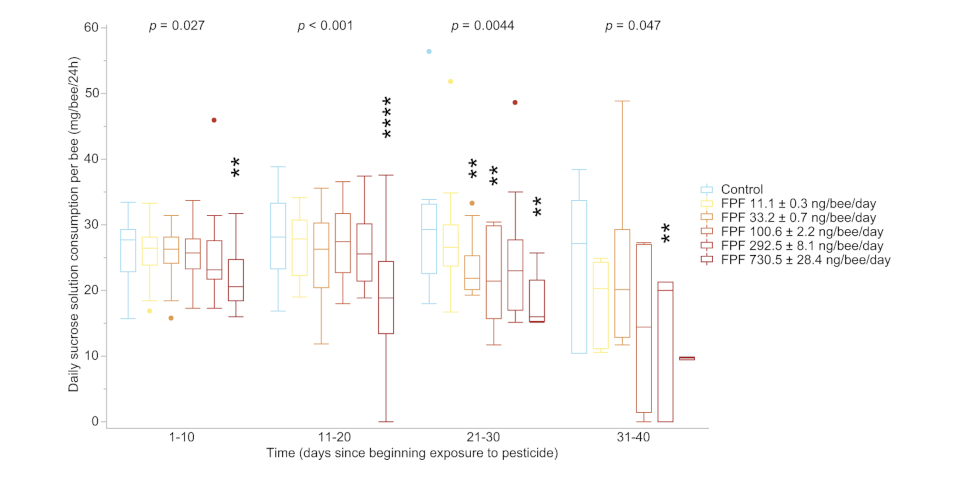Abstract:
Simone Tos, James C. Nieh, Annely Brandt, Monica Colli, Julie Fourrier, Herve Giffard, Javier Hernández-López, Valeria Malagnini, Geoffrey R. Williams, Noa Simon-Delso
The assessment of pesticide risks to insect pollinators have typically focused on short-term, lethal impacts. The environmental ramifications of many of the world’s most commonly employed pesticides, such as those exhibiting systemic properties that can result in longlasting exposure to insects, may thus be severely underestimated. Here, seven laboratories from Europe and North America performed a standardised experiment (a ring-test) to study the long-term lethal and sublethal impacts of the relatively recently approved ‘bee safe’ butenolide pesticide flupyradifurone (FPF, active ingredient in Sivanto®) on honey bees. The emerging contaminant, FPF, impaired bee survival and behaviour at field-realistic doses (down to 11 ng/bee/day, corresponding to 400 µg/kg) that were up to 101-fold lower than those reported by risk assessments (1110 ng/bee/day), despite an absence of time-reinforced toxicity. Our findings raise concerns about the chronic impact of pesticides on pollinators at a global scale and support a novel methodology for a refined risk assessment.
COMMUNICATIONS BIOLOGY | (2021)4:805 | https://doi.org/10.1038/s42003-021-02336-2 | www.nature.com/commsbio










